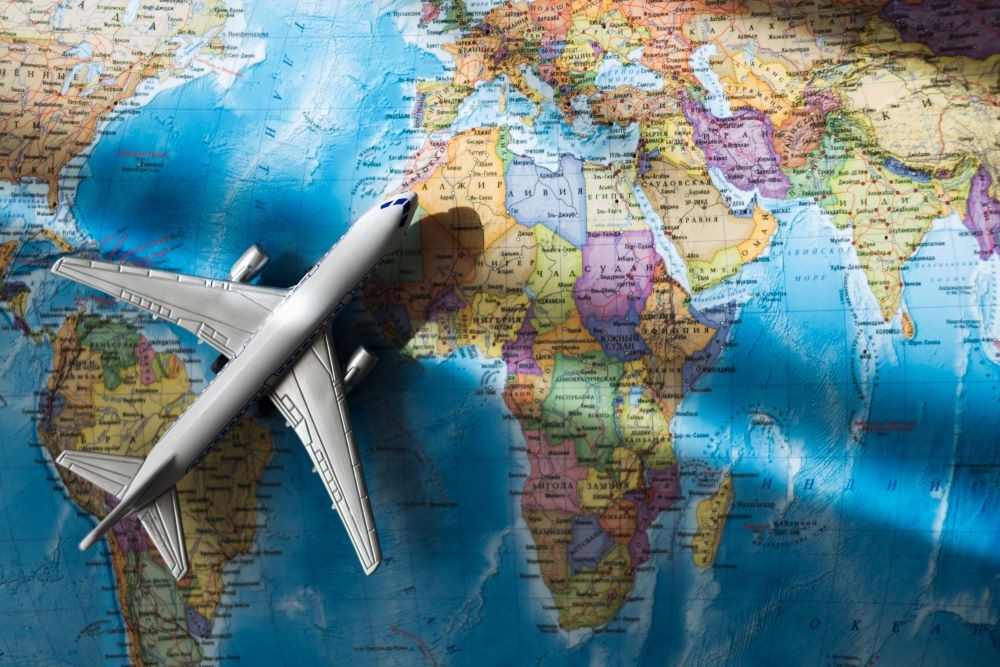In 2020, the future of incentive travel was uncertain, as programs in dream destinations like Australia, Europe and exclusive islands in the far-flung corners of the world screeched to a halt as international borders closed, and travel all but completely shut down when the COVID-19 pandemic took hold.
As vaccinations are now being distributed globally, the incentive travel industry is beginning to awaken. But how will these reward trips change as corporations revive their in-person incentive programs—that is, if they decide to move forward at all?
There is good news on that front, based on the results of recent research from the SITE Foundation’s whitepaper: Corporate InSITEs: The Changing Face of Incentive Travel. When the foundation asked its survey cohort to share how committed the leadership of their corporations were to incentive travel as a key part of their reward and recognition program, “94% of the 50 companies surveyed state that they are 100% supported by the leadership.”
This widespread belief that travel rewards still reap important benefits for corporations bodes well for the incentive industry’s bounceback.
“The research is telling us unequivocally that incentive travel is here to stay, and that the pandemic has done nothing other than sharpen everyone’s desire to travel—the much stressed ‘pent-up demand,’” said Padraic Gilligan, chief marketing officer of SITE and managing partner at SoolNua.
In fact, Cathy Jones, CEO and owner at Shamrock Innovations, reported that her groups are trending bigger than some of their pre-pandemic trips, with more plus-ones joining and excitement around travel.
“I had a group in 2019 that was for 110 people, they traveled in 2020 and it was 50, and 2021 in Nashville it was 170 [people],” she said. “For every one of my groups, there’s this pent-up demand.”
But while incentive travel is coming back, it might look and feel different than the pre-pandemic days. Here are five trends to watch as incentive travel revs up for its return.
1. Domestic Travel Will Continue to Thrive; Trans-Atlantic to Follow
Just as domestic locations have undoubtedly helped meetings and events get back to business, they will play a role in helping incentive programs deliver experiences closer to home, too.
“Pre-pandemic, horizons were decisively broad, and we were enjoying a sustained period of expansion with North America looking further and further afield, even becoming adventurous and traveling to places like Vietnam, Peru, Japan and Croatia,” Gilligan said. “The pandemic has put a temporary stop to extra-regional travel and, for the next two years, destinations, by and large, will be domestic or, at most, regional, decidedly familiar, tried and tested.”

Gareth Heyman, principal of MoreEvents—a global third-party planning company—has noticed this same trend with his clients, noting that regularly, about half of his company’s business is outside the borders of the U.S., though most clients are U.S.-based.
“[Before,] the further the destination and the more exotic it sounded, they wanted to go further and explore places like New Zealand and Australia,” Heyman noted. “Now, it’s absolutely, completely the opposite. We are looking for destinations domestically—like Puerto Rico and U.S. Virgin Islands.”
Jones is seeing this shift to domestic locations as well—but leisure travel demand in first-tier cities has her turning to up-and-coming second-tier destinations.
“It’s hard to get into the first-tier destinations like Nashvilles and Charlestons,” Jones said. “That’s why I’m looking into Louisville and Savannah, which is a jamming place right now. I’m also pushing St. Pete and St. Augustine.”
As far as offshore destinations, Jones is also looking to locations like Puerto Rico and the Bahamas. The key to making high-end incentives sing in these locations closer to home, she said, is crafting exclusive and experiential trips. “I’m actually working with a partner right now, and we are starting Palm Star Travel-A Turnkey Air Service Provider to the Bahamas and caravans to The Out Islands so we can make the Bahamas feel like Hawai`i. No one knows about The Out Islands and they are fabulous.”

“The moment you get on the airplane, we are going to give complimentary Bahama Mamas,” she continued. “You have to add to the experience to make it stand out.”
In addition to destinations like the U.S. Virgin Islands, Hawai`i and Puerto Rico, that achieve an international feel without a passport, Gilligan said that for companies that are moving forward with travel, the research points to a shift away from big cities to more open spaces; “for countryside over city, rural over urban,” he noted. “Smaller resorts where you can do a buyout are also in vogue as are destinations with an outdoors, natural setting—think Alberta, Utah, Colorado.”
Organizing programs in Europe may not be as far off as initially thought, however, thanks to a growing vaccination effort across the Atlantic.
“Trans-Atlantic travel between the U.S. and Europe will recover before Trans-Pacific or trans-continental as Europe and North America share the same vaccination pool of Pfizer, Astra Zenaca, Moderna and Johnson & Johnson,” Gilligan said.
[Related: Meeting Prof Travels the World to Deliver Real-Time Industry Status Reports]
2. Resorts: It’s All About a Controlled Environment
When it comes to resort selection nowadays, the deciding factor may be less about the brand loyalty and more about how easily the planner can control the environment for their incentive group.
“All purchasing will be determined by duty of care and corporations will always want to mitigate risk,” Gilligan explained. “Large resorts and big-box hotels will be eschewed in favor of boutique resorts and independent properties where a buyout or a take-over is possible.
“The trend is driven purely and simply by notions of safety and control: Control the environment via a buyout and you lessen risk,” he said.
Furthermore, SITE Foundation research found that contracts and risk management, along with destination selection, are the two most important considerations for the future success of incentive travel programs.
Safety has never been more important. But one thing that hasn’t changed when it comes to picking a resort? Listening to your client and understanding their budget and needs.
“Some like villas, some like all-inclusive…it’s very client-specific and budget-specific—it’s always been,” Heyman stressed.
3. Work from Home Trend Gives Travel a Boost
While pandemic restrictions are easing, many corporations are finding their employees reluctant to return to the office. The work-from-home solution during the pandemic is turning into a permanent trend for some—but this could play to the incentive industry’s advantage.
“I think the increase in working from home will increase companies’ needs to stage motivational events that unify remote workforces,” Gilligan said.
Furthering this point, a recent report from The Wall Street Journal found some tech and startup companies have replaced their real estate budget with company bonding trips.
“Some startup CEOs say they are crafting frequent and elaborate all-employee trips that are strictly for fun. It’s a spin on the old ‘off-site,’ when offices gathered somewhere outside the corporate campus to hear about company goals and make plans to improve sales performance, capped off by some wining and dining,” the article states.
“Business-software company People.ai Inc. shed its headquarters in San Francisco, closed most of its satellite offices and scrapped plans for another office in London to go permanently remote during the pandemic,” the article stated, finding that its CEO is taking 85% of the 2019 real-estate lease budget and investing it in employee perks, “including one trip for the full staff of more than 200 and four trips that employees will take in smaller teams.”
Additionally, after the SITE Foundation reported an 80% drop in live incentives in the fall of 2020, it now reports that 82% of its cohort surveyed is actively planning in-person travel incentives for 2022 and beyond—and even more notably, only 2% of respondents report a permanent departure from incentive travel.
“What we’re seeing here is the equivalent of an unexpected knock-out blow that floors the fighter only for him to rise on the 8th count, regain stability and resume, a little chastened and with lessons learned,” the foundation asserted in the Corporate InSITEs whitepaper.
[Related: 5 Industry Experts Chime in on the State of the Industry]
4. Corporate Social Responsibility Activities on the Rise
In a year where empathy was needed in great supply, incentive industry professionals are seeing a significant number of groups genuinely wanting to give back to destinations to which they travel.
“There’s a lot more CSR talk—more community engagement and making an impact while they are there,” Heyman said. “That is one thing I see that is very different. It was mentioned in the past, but it wasn’t always fulfilled. But now almost every conversation I have is wanting to leave the community with a positive footprint.”
“In my history for things like that, sometimes a lot of that stuff [CSR] gets blown off, frankly,” he continued. “These people now are really wanting to do something.”
Gilligan agreed, saying that he’s seeing a significant change in program designs, with less stress on corporate returns and more focus on the joy of travel and giving back.
“For example, teambuilding and group dining were included in the top four inclusions for incentive travel experiences along with cultural experiences and ‘bucket list’ experiences,” he said of research findings on pre-pandemic programs. “More recent research ranks ‘bucket list’ experiences in [the] top position (previously fourth) and replaces teambuilding and group dining with CSR and wellness activities.”
5. Hybrid Is Here to Stay
Throughout the course of the past year, many meeting and event professionals have asserted that the hybrid meetings trend isn’t going away—and this may be true for incentive programs, too.
Heyman’s team made the transition to the digital world quickly as the pandemic took its hold, helping clients in a myriad of ways, from helping them select digital platforms for their events to organizing virtual cooking experiences with famous chefs from around the world.
“We have been extremely busy the last 18 months, and I say it not to be boastful, I say it to give hope to others that there are business opportunities out there,” Heyman said.
“We did absolutely transition and re-educate our staff on digital and virtual after we got through all of last year’s cancellations and postponements,” he added, explaining that his team worked to become digital platform experts. “It’s much in the way we would recommend a destination or resort for our clients, but instead we recommend a platform, [by evaluating] budget and digital capabilities.”
By investing in education and strategy and diversifying their client services, his team wrapped 2020 strong, and is on track to potentially have its best year ever in 2021.
“All of our clients believe there will be a digital component forever—what level or degree that is, we don’t know yet,” he added. “The fundamental conversation is, if and why would people get on an airplane again?”
SITE Foundation research found this sentiment shared by its cohort. While virtual programs can’t completely replace the value of in-person incentive programs, it found that hybrid rewards programs combining in-person and digital elements will stick around, with that category of incentive program seeing the biggest increase (32%) among respondents.
“We don’t look at that as a doom and gloom—we are excited about it,” Heyman said. “Think about the changes that we are seeing—the robustness that is our digital future. This is forever, and that’s what I say to some planners that say, ‘When things come back.’ Things don’t go back, they go forward.”
“You have to be part of this digital component to some degree to see how it fits into tomorrow’s balance of in-person and digital,” he concluded.
[Read this eHandbook: A Hybrid Meetings How-To]
The Outlook Is Strong
Overall, Gilligan thinks the importance of incentive travel—especially after the pandemic—cannot be understated.
“I think incentive travel will become an even more prestigious element in a company’s reward and recognition program as it will be undertaken more thoughtfully, with less complacency,” he said. “We have taken our ability to travel freely for granted and the pandemic has taught us that we cannot do that.
“Along with that there’ll be more recognition of the soft power benefits of incentive travel—the way it fosters corporate culture, for example, or how it allows engagement across company hierarchies.”
And while the outlook is strong, the sudden increase in demand could put some strain on industry professionals. Jones added that in this case, it’s important to pause and have compassion for fellow peers working at hotels, those planning the incentives and the clients. “We are all just doing the best we can. We went from great year, to losing everything, to going six million miles an hour,” she said. “I just ask everyone to have communication and compassion.”
Read the full whitepaper report from SITE Foundation.







